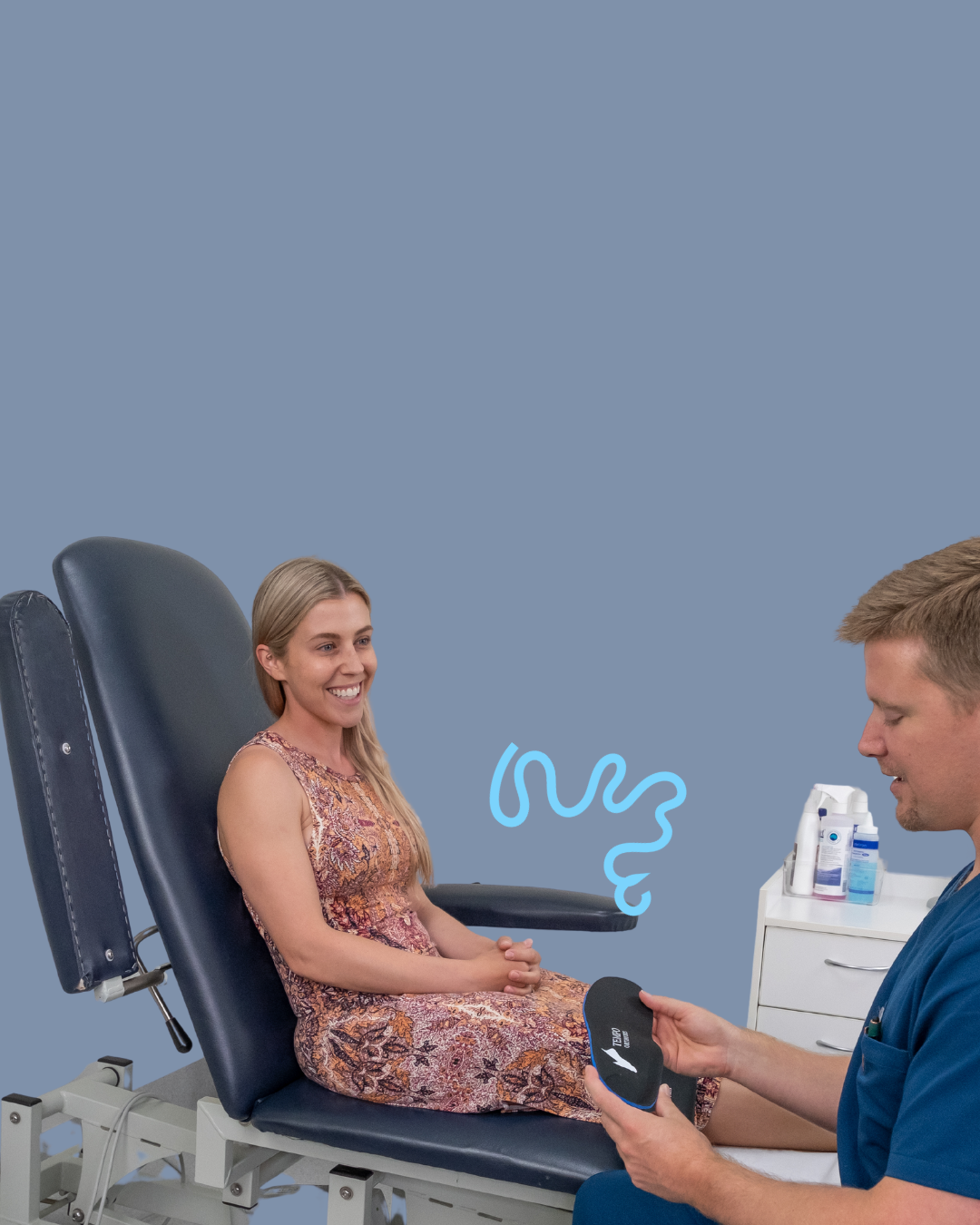
Tips for Integrating Tempo Prefabricated Orthotics into clinical practice
Tempo Orthotics, a premium prefabricated orthotic solution, offers allied health professionals a valuable tool to address mild pronation-induced conditions in their patients.
Integrating Tempo Orthotics into your clinic's treatment plans can enhance patient care and outcomes. In this article, we will explore some essential tips for seamlessly incorporating Tempo Orthotics into your practice.
- Thorough Assessment
Before recommending Tempo Orthotics, it is imperitive to conduct a comprehensive assessment of your patient's condition to see if they would be the most appropriate option for your client. As a clinician, you are already well-versed in the intricate nuances of prescribing any treatment option, understanding the multitude of factors that must be considered when assessing a patient's individual needs. Consider factors such as their medical history, current symptoms, gait analysis, previous treatments and treatment goals of the patient and clinician. This assessment will help you determine if Tempo Orthotics are a suitable option and provide valuable insights into the patient's specific treatment plan.
- Personalised Treatment Parameters
Every patient is unique, and their orthotic needs may vary. Tailor the treatment parameters to align to individual patient's requirements. Consider aspects such as the level of pronation correction, arch support, and cushioning. While Tempo Orthotics can be adapted to some extent to address individual foot characteristics, if extensive modifications are necessary, it may be advisable to explore the suitability of a custom orthotic device or alternative prefabricated devices in such cases.
- Integration with Other Modalities
Tempo Orthotics can complement various treatment modalities. Consider integrating them with manual therapy, injection therapies, strength and conditioning programs, exercise programs, or pharmacological management for a holistic approach to patient care. This synergy can enhance the effectiveness of your treatment plans and help address the root causes of pronation-induced conditions. It is beneficial to view them as a tool for load management and distribution but to be integrated with other modalities when appropriate for the best patient outcomes.
- Patient Education
When educating your patients about Tempo Orthotics, it is essential to provide a balanced perspective. Explain the potential benefits, mechanisms of action, and what they can reasonably expect from using these orthotics to alleviate their specific symptoms and potentially return to their preferred activity levels. Empowering patients with this knowledge enhances their understanding and often results in better treatment compliance and outcomes.
However, it is crucial to acknowledge that, from a research standpoint, the academic evidence supporting the benefits of prefabricated orthotics, such as Tempo Orthotics, remains limited. This limitation arises due to the complexity of assessing orthotic outcomes, given the multitude of variables involved. While the concrete benefits are not definitively confirmed through rigorous academic studies, it is widely acknowledged in clinical practice that many patients perceive positive effects from using prefabricated orthotics.
It is important to emphasize that further research is needed to accurately confirm and quantify the benefits of prefabricated orthotics, particularly in addressing conditions like flat foot pain. This ongoing research will provide a more robust understanding of the clinical efficacy of such orthotic solutions, helping both clinicians and patients make more informed decisions regarding their use. In the meantime, clinical observations and patient experiences continue to contribute valuable anecdotal evidence to support their potential clinical utility.
- Regular Monitoring and Evaluation
Monitoring and evaluating the progress of your patients' treatment is essential when integrating Tempo Orthotics. Regularly assess their response to orthotic therapy and track changes in symptoms and functional outcomes. Adjust the treatment plan as needed to ensure continuous improvement.
- Embrace the Potential of Tempo Orthotics
Recognize the potential of Tempo Orthotics as a valuable addition to your therapeutic toolbox. These prefabricated orthotics provide consistent support, comfort, and pain relief for patients with mild pronation-induced conditions. Embrace Tempo Orthotics as a versatile and effective solution to optimize patient care.
Integrating Tempo Orthotics into your clinic's treatment plans can significantly benefit patients with mild pronation-induced conditions such as shin splints, patellofemoral syndrome, and plantar fasciitis. By following these essential tips, you can ensure that your patients receive the best possible care:
- Conduct a thorough patient assessment to understand their specific needs.
- Personalize the treatment parameters of Tempo Orthotics.
- Combine orthotic therapy with other modalities for a holistic approach.
- Educate patients about the benefits and expectations of Tempo Orthotics.
- Regularly monitor and evaluate treatment progress.
Incorporating Tempo Orthotics into their clinical practice enables allied health professionals to expand their service offerings, better meet patient needs, and facilitate improved mechanical load reduction, allowing patients to return to rehabilitation and exercise. This innovative solution proudly enhances the quality of care and outcomes for both practitioners and patients.
Please email us for a free EBOOK on the design of the orthotics and rationale.
